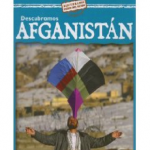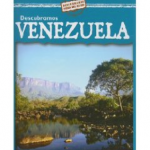By Holly Johnson, University of Cincinnati, Cincinnati, OH
It is place, permanent position in both the social and topographical sense that gives us our identity.
~ J.B. Jackson
Addressing geography and international literature, I want to explore issues of identity with readers. In last week’s blog, I pondered teaching geography through international literature. This week, I am interested in how young readers reflect upon their own geographical identity and resultant affinities for particular places or locations.
Certainly, geography plays a role in our identities and colors our perceptions as readers and writers when the books come from our home culture, but how does that work when the literature is produced outside our geographical selves? How we might read a text from a geographical/cultural location that is outside the book’s cultural backdrop? I am not thinking about outsider/insider perspectives here, but rather, a geographical sensibility that is part cultural but also part physical location or physical affinity.
I have heard some Midwesternern Americans talk about the comfort level they have with their culture, but more interestingly they discuss the physicality of that comfort — with the geography of the Midwest. This comfort extends to the climate, weather, and features of the land that give one a sense of belonging, a sense of place, a sense of knowing.
I am reminded of Wendell Berry’s work and his concept of being “married to the land,” and Kathleen Norris’ work, especially Dakota: A Spiritual Geography (1994), which reviews on amazon.com assert:
After 20 years of living in the “Great American Outback,” as Newsweek magazine once designated the Dakotas, poet Kathleen Norris … came to understand the fascinating ways that people become metaphors for the land they inhabit. When trying to understand the polarizing contradictions that exist in the Dakotas between “hospitality and insularity, change and inertia, stability and instability … between hope and despair, between open hearts and closed minds,” Norris draws a map. “We are at the point of transition between east and west in the United States,” she explains, “geographically and psychically isolated from either coast and unlike either the Midwest or the desert west.”
Like Terry Tempest Williams (Refuge), Norris understands how the boundary between inner and outer scenery begins to blur when one is fully present in the landscape of their lives. As a result, she offers the geography lesson we all longed for in school. This is a poetic, noble, and often funny (see her discussion on the foreign concept of tofu) tribute to Dakota, including its Native Americans, Benedictine monks, ministers and churchgoers, wind-weathered farmers, and all its plain folks who live such complicated and simple lives. — Gail Hudson
I wonder when we might begin to talk with younger readers about the ways their identities as readers may be tied to a particular geography, as well as what books might be best for addressing a geographical identity. What books would you suggest for this type of exploration? How strongly is identity tied to geography? For further exploration, I would recommend Tsunami Warning (Morrison, 2007), The Coast Mappers (Morrison, 2004), and the Looking at Countries series by Kathleen Pohl, which is written in both English and Spanish.



After five posts, I am still attempting to figure out international literature — its definition, how it might be taught, how it might be read with a social responsibility lens, and how travel and the knowledge of geography can enrich what it means to us. I am circling all around a concept that I haven’t quite named, but I know the value of international literature. It connects me to the rest of the world in ways that override the stories heard on the news. It connects me to people, who have so much to teach me. And international literature brings me closer to those with whom I share the planet.
Please visit wowlit.org to browse or search our growing database of books, to read one of our two on-line journals, or to learn more about our mission.
- Themes: Holly Johnson
- Descriptors: Debates & Trends, WOW Currents

WOW, Holly. You brought together my sheroes/hero – Berry, Norris, William and made me think how place/geography has influenced my students. They are mostly from small towns or rural Washington. Their world is circumcribed by the borders they have not crossed. But they are amazingly open to discovering new worlds through stories. Books like Sold, Long Way Gone, Touching the Sky make a difference for them. Those are just some of the books students read in my class, A Global View Through Children’s Literature. Thanks for reminding me.